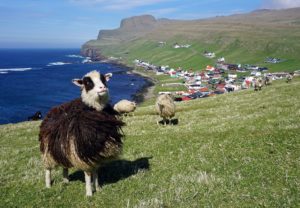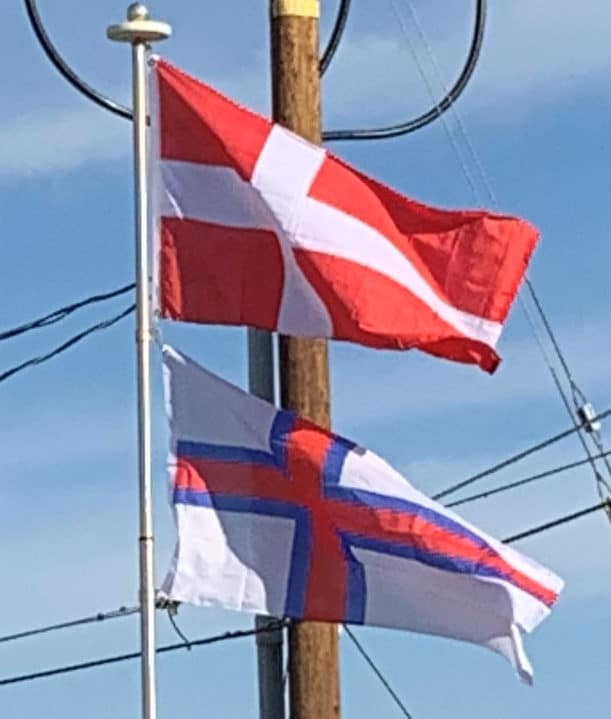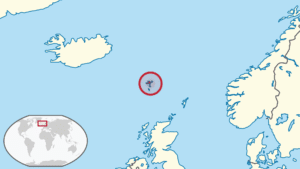Introduction:
The Faroe Islands, is a North Atlantic archipelago located 320 kilometres (200 mi) north-northwest of Scotland, and about halfway between Norway and Iceland. It is an autonomous territory within the Kingdom of Denmark. The islands have a total area of about 1,400 square kilometres (540 sq mi) with a population of 51,783 as of June 2019.
The terrain is rugged; the climate is subpolar oceanic climate — windy, wet, cloudy, and cool. Temperatures average above freezing throughout the year because of the Gulf Stream. As a result of the moderation and the northerly latitude, summers normally hover around 12 °C (54 °F). Average temperatures are 5 °C (41 °F) in winter. The northerly latitude location also results in perpetual civil twilight during summer nights and very short winter days.
Between 1035 and 1814 the Faroes were part of the Kingdom of Norway, which was in a personal union with Denmark from 1450. In 1814 the Treaty of Kiel transferred Norway to the king of Sweden, on the winning side of the Napoleonic wars, whereas the king of Denmark, on the losing side, retained the Faroes, along with the two other historical Norwegian island possessions in the North Atlantic: Greenland and Iceland. The Faroe Islands have been a self-governing part of the Kingdom of Denmark since 1948.
The Faroese control most of their domestic affairs. Those that remain the responsibility of Denmark include military defence, policing, and the justice department, currency, and foreign affairs. However, as they are not part of the same customs area as Denmark, the Faroe Islands have an independent trade policy and can establish trade agreements with other states. The islands also have representation in the Nordic Council as members of the Danish delegation. The Faroe Islands have their own national teams competing in certain sports.
Etymology:
In Faroese, the name appears as Føroyar. Oyar represents the plural of oy, older Faroese for “island”. Due to sound changes, the modern Faroese word for island is oyggj. The first element, før, may reflect an Old Norse word fær (sheep), although this analysis is sometimes disputed because Faroese now uses the word seyður (from Old Norse sauðr) to mean “sheep”. Another possibility is that the Irish monks, who settled the island around 625, had already given the islands a name related to the Gaelic word fearrann, meaning “land” or “estate”. This name could then have been passed on to the Norwegian settlers, who then added oyar (islands).[12] The name thus translates as either “Islands of Sheep” or “Islands of Fearrann”.

In Danish, the name Færøerne contains the same elements, though øerne is the definite plural of ø (island).
In English, it may be seen as redundant to say the Faroe Islands, since the oe comes from an element meaning “island”. This is seen in the BBC Shipping Forecast, where the waters around the islands are called Faeroes. The name is also sometimes spelled “Faeroe”.
History:
Archaeological evidence shows settlers living on the Faroe Islands in two successive periods before the Norse arrived, the first between 300 and 600 AD and the second between 600 and 800 AD. Scientists from the University of Aberdeen have also found early cereal pollen from domesticated plants, which further suggests people may have lived on the islands before the Vikings arrived. Archaeologist Mike Church noted that Dicuil mentioned what may have been the Faroes. He also suggested that the people living there might have been from Ireland, Scotland, or Scandinavia, possibly with groups from all three areas settling there.

